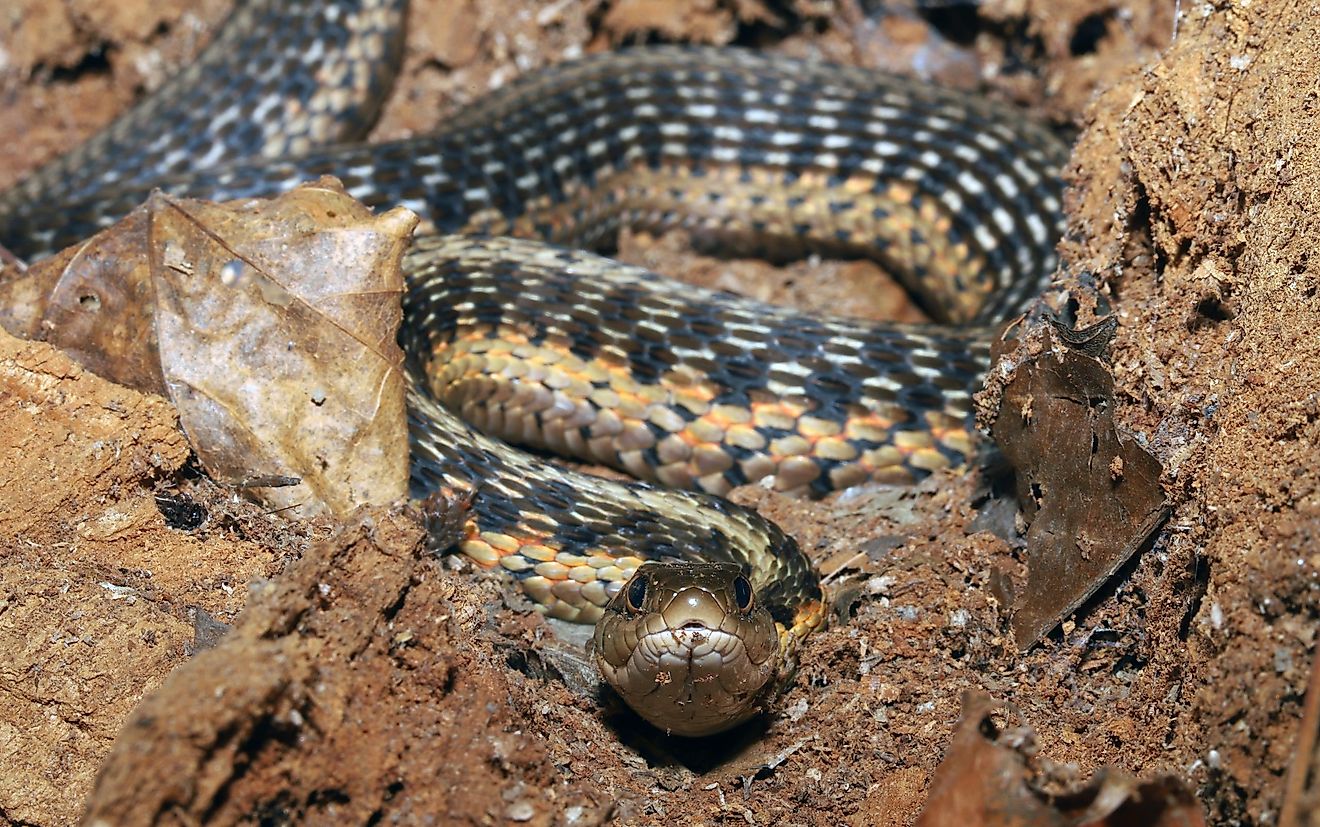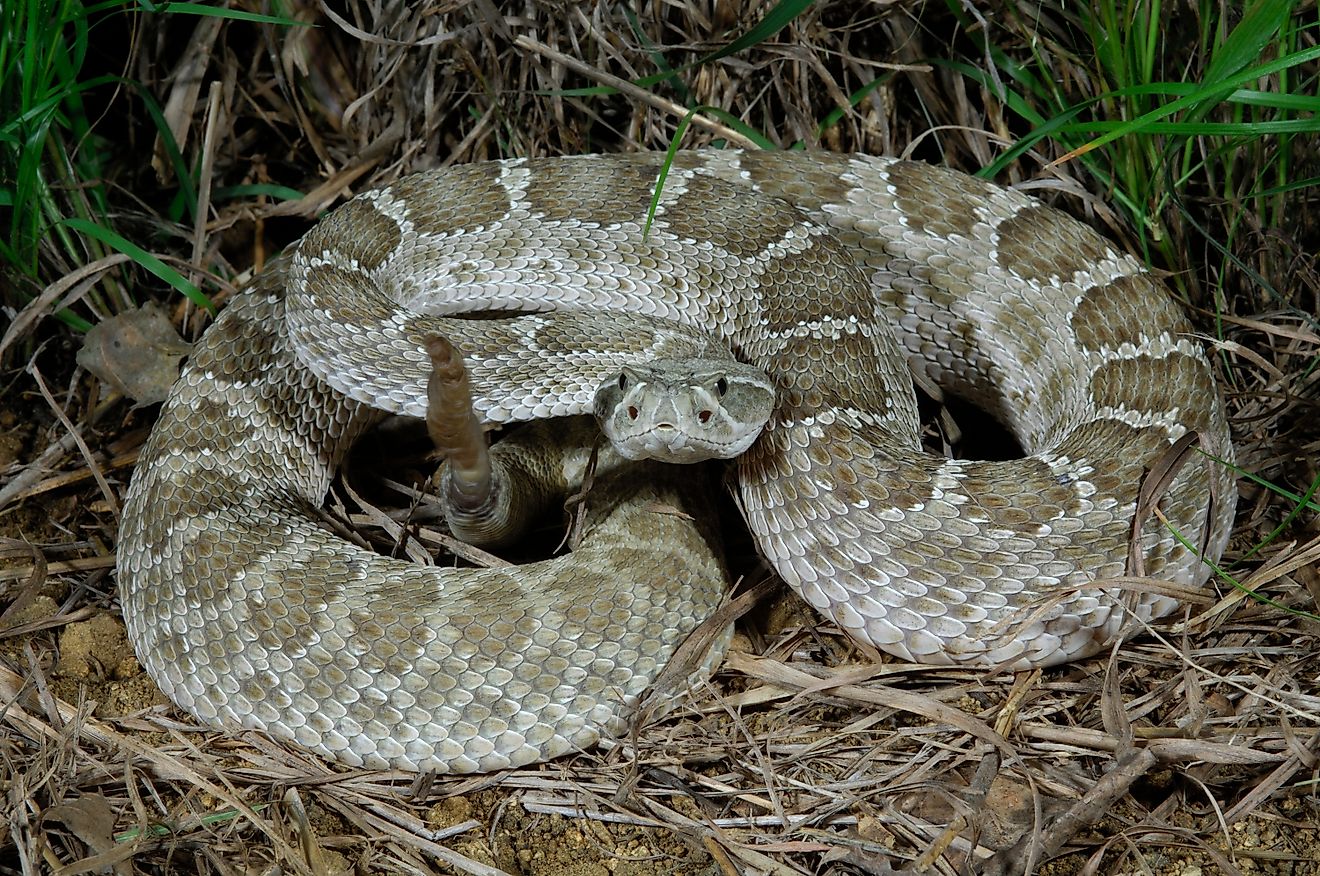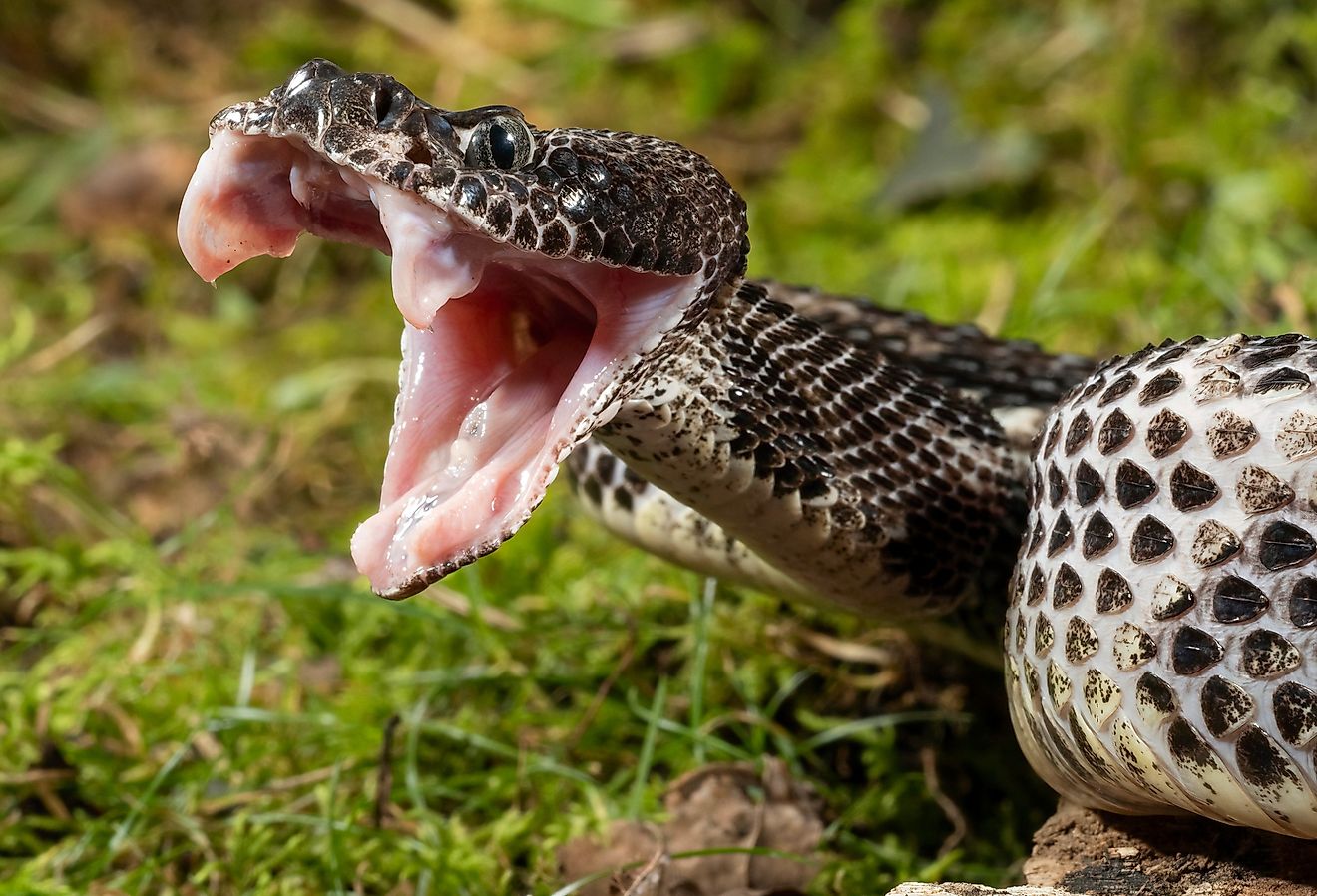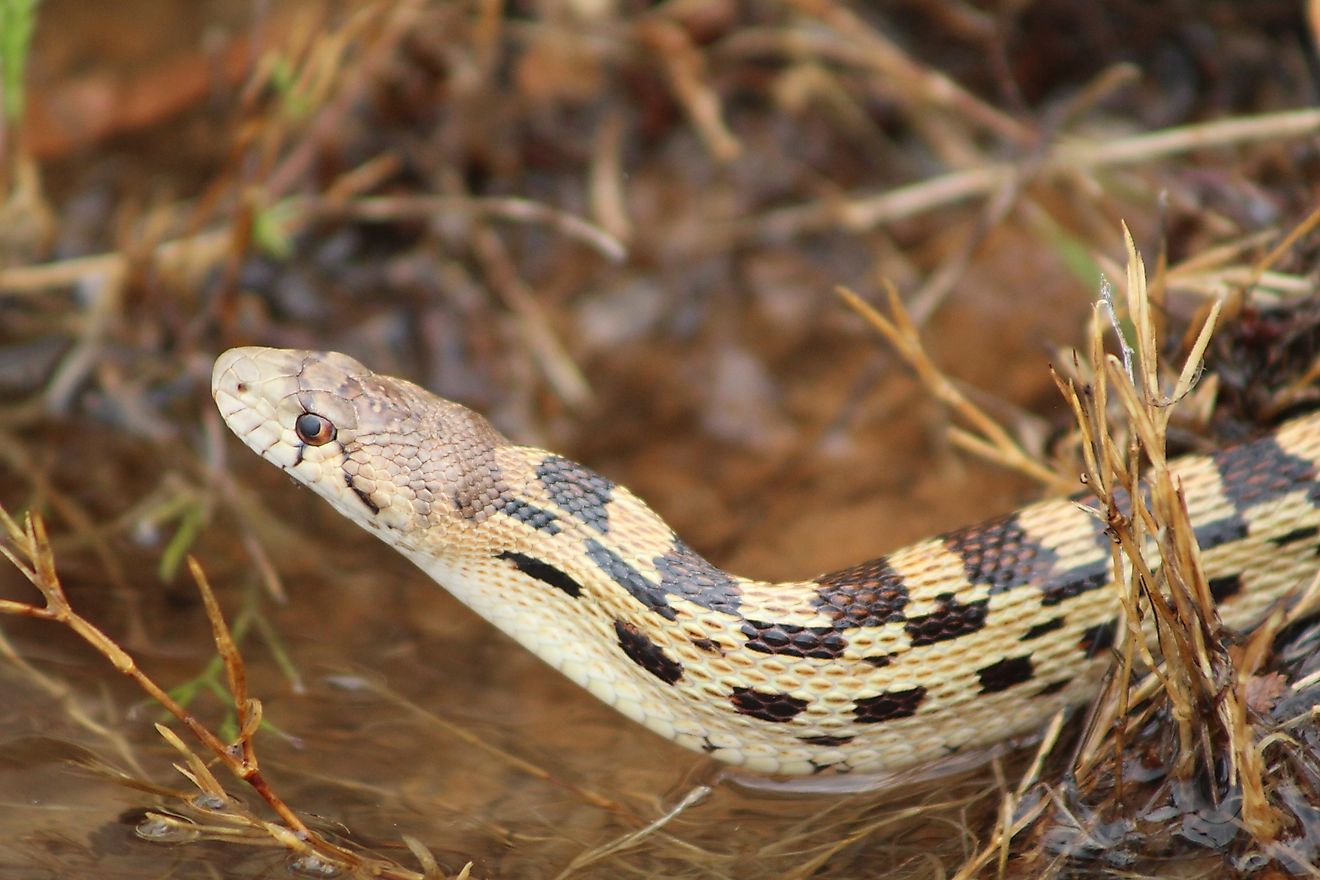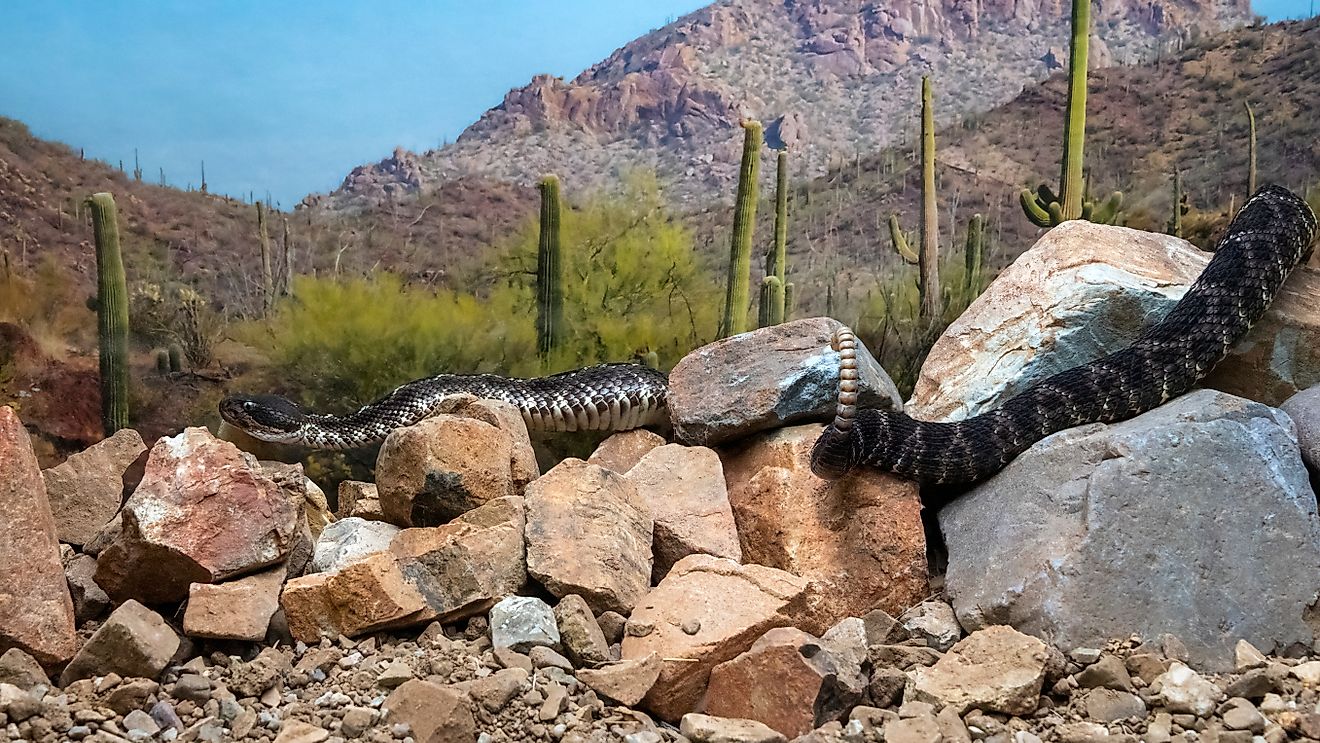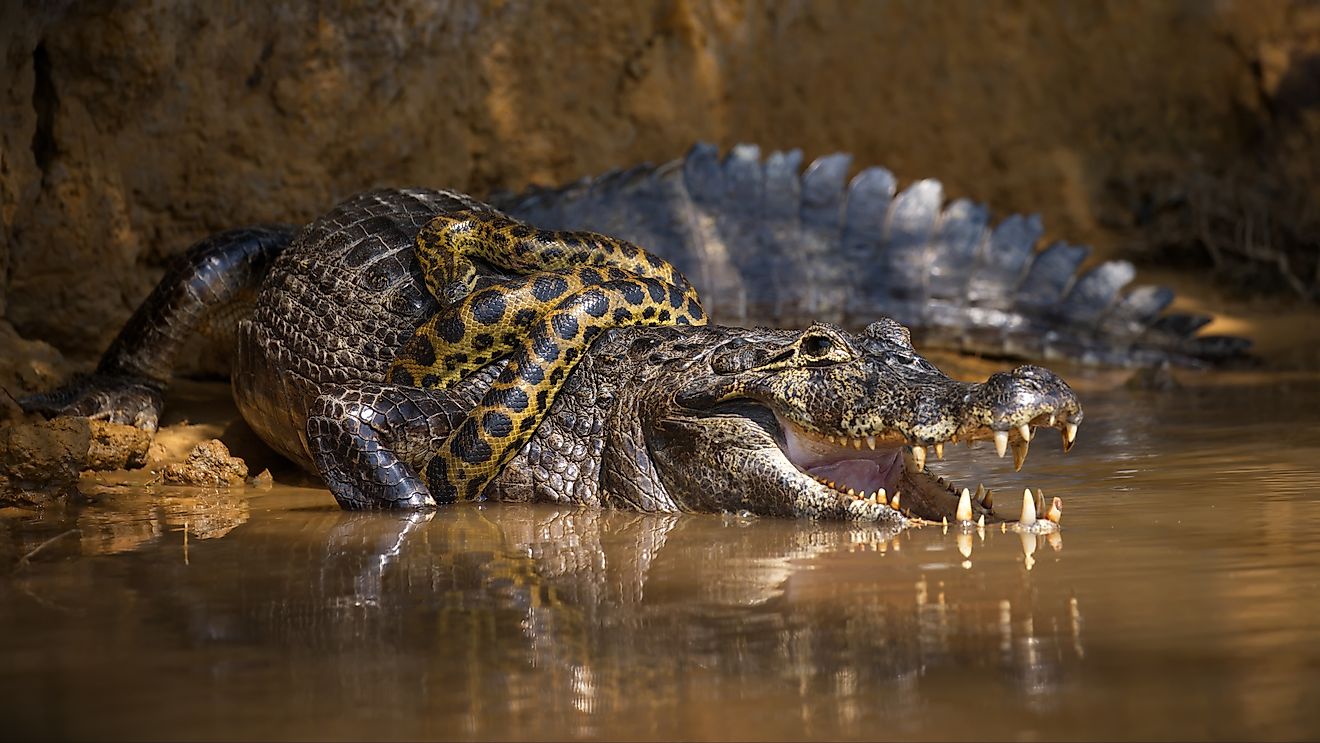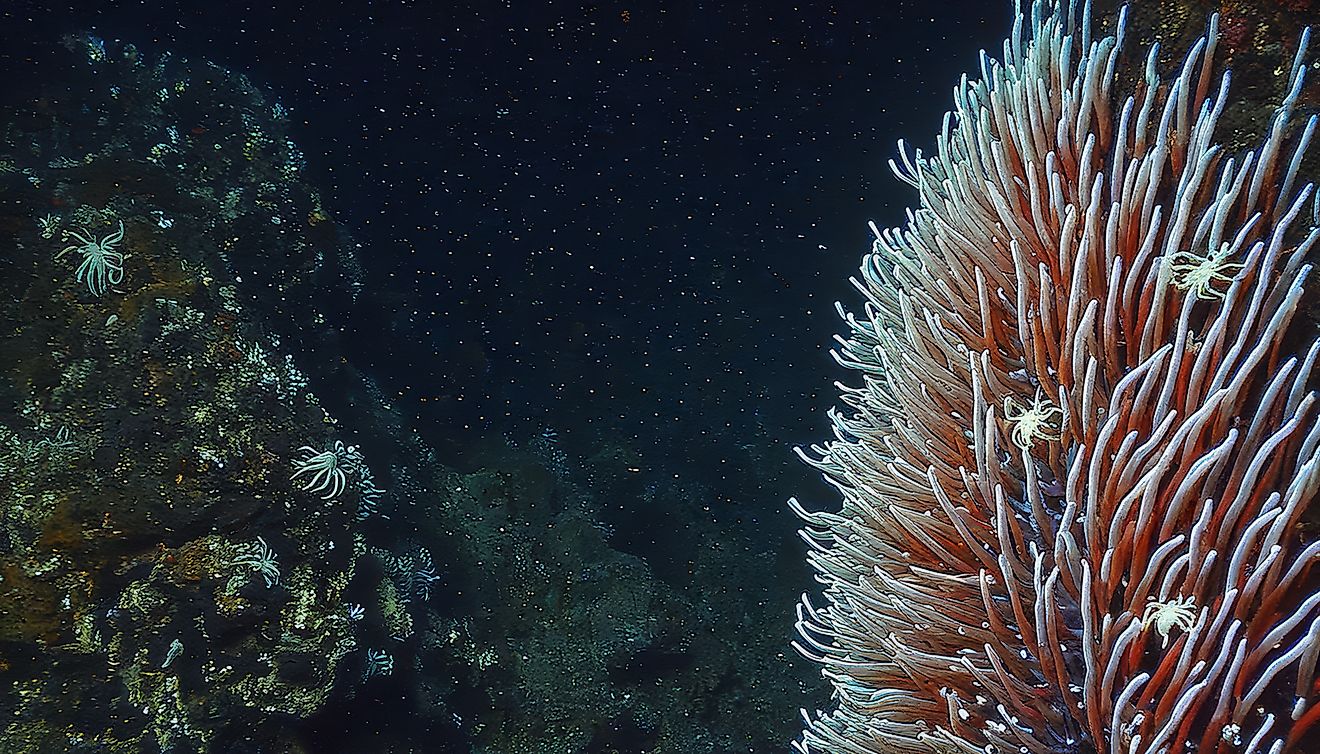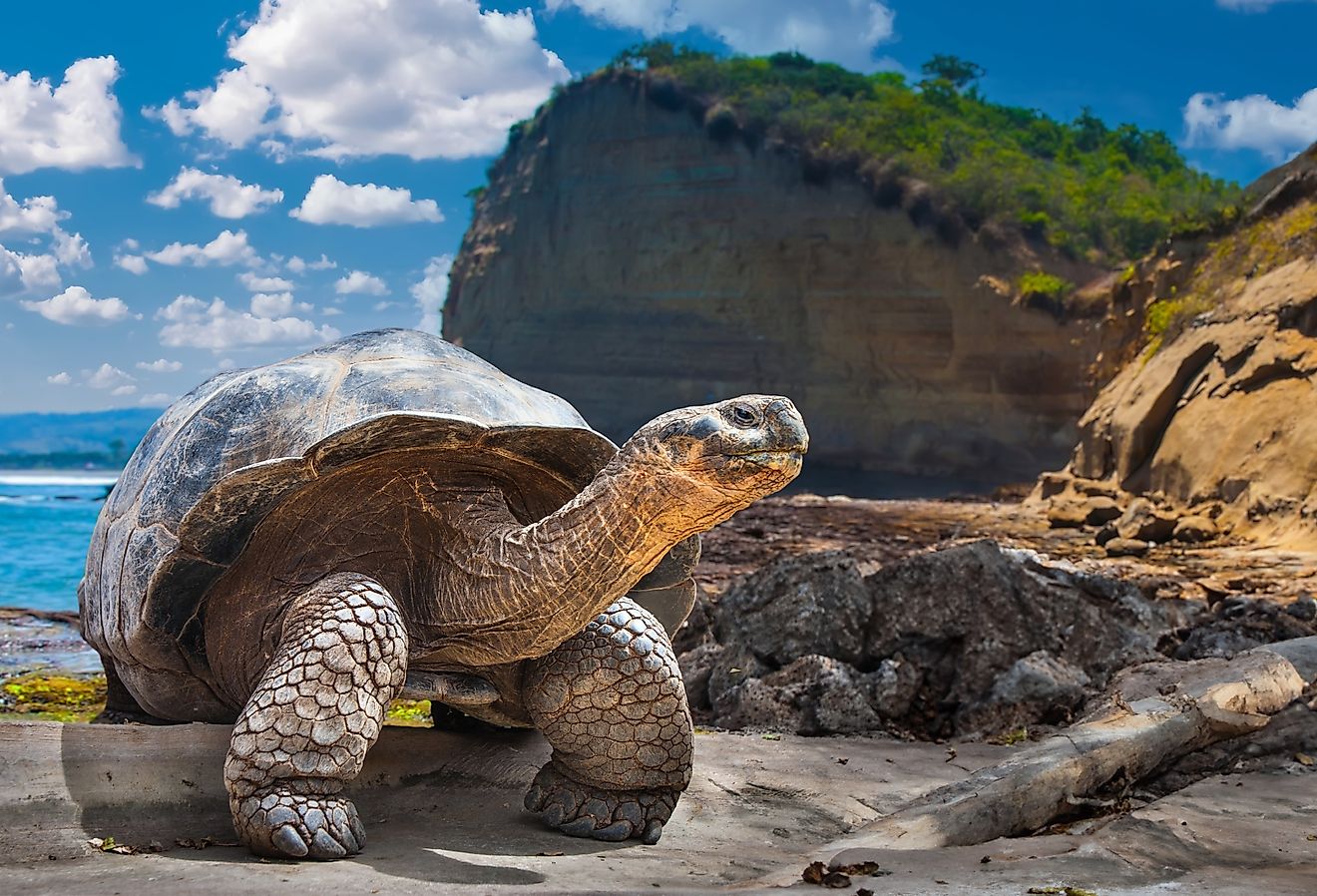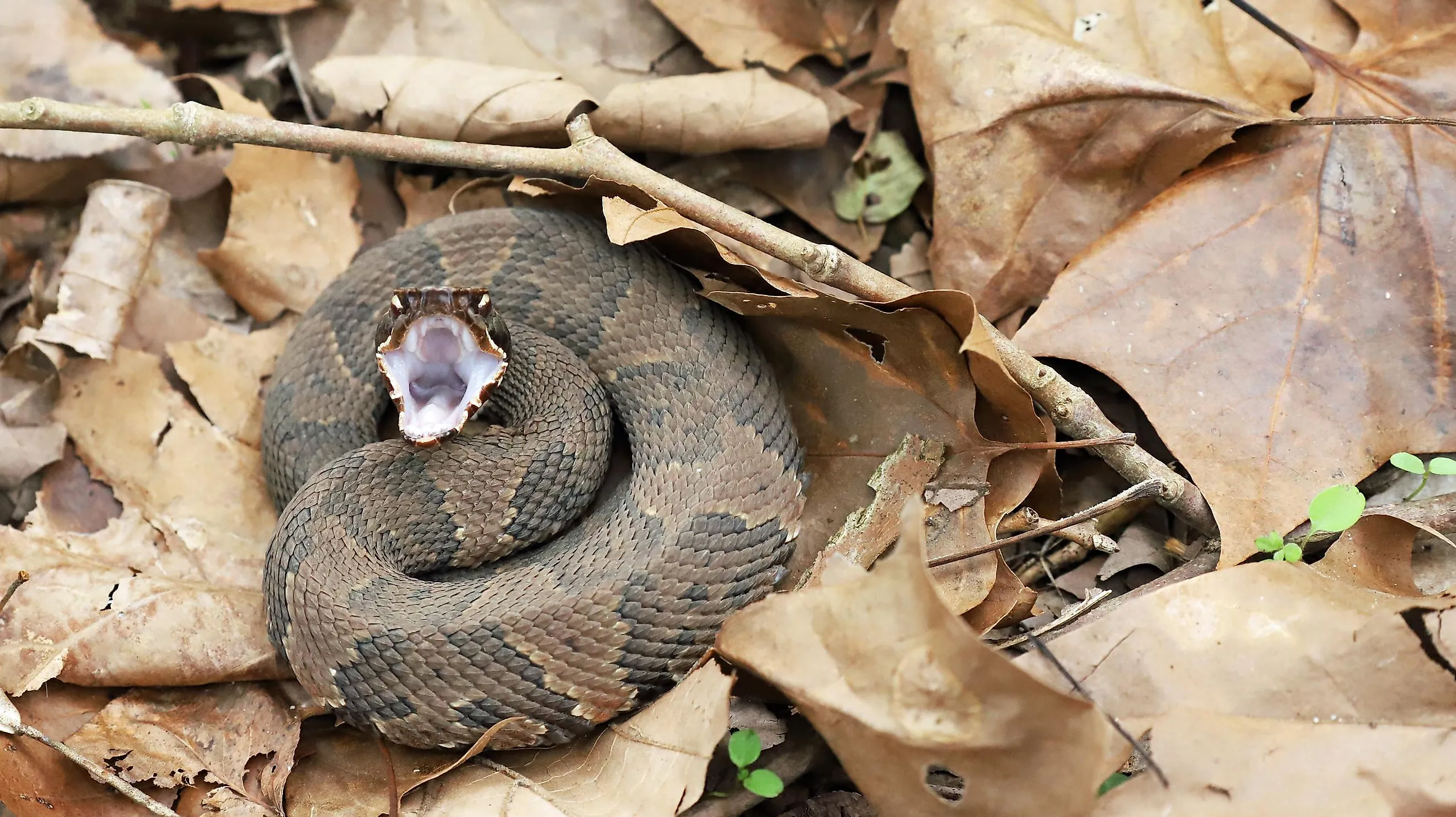
The 9 Most Venomous Snakes In The United States
Each year, approximately 8,000 people are bitten by venomous snakes in the United States. Thankfully, due to the widespread availability of necessary anti-venoms, only about 9 to 15 fatalities occur because of these mostly defensive attacks. Currently, there are 22 species of venomous snakes classified in the U.S., as well as a further 37 subspecies. The four main categories of potent strikers are rattlesnakes, cottonmouths, copperheads, and coral snakes.
Measuring Venom Strength
Some snakes deliver a high dose of low-potency venom, while others are more surgical in their approach. To measure the strength of snake venom, scientists use the LD50 toxicology test where LD50 or median lethal dose is the volume of venom required to kill half of the mice in the unlucky test groups. Althought this method has been criticized on both moral and scientific grounds, a better alternative is yet to be found. However, one must remember that a strong venom does not necessarily make the snake more lethal than others. The amount of venom that gets injected is an essential factor to consider, as are the behavioral patterns of each species. Here are some of the big names to watch out for in the United States.
1. Tiger Rattlesnake - LD50 of 0.06 mg/kg
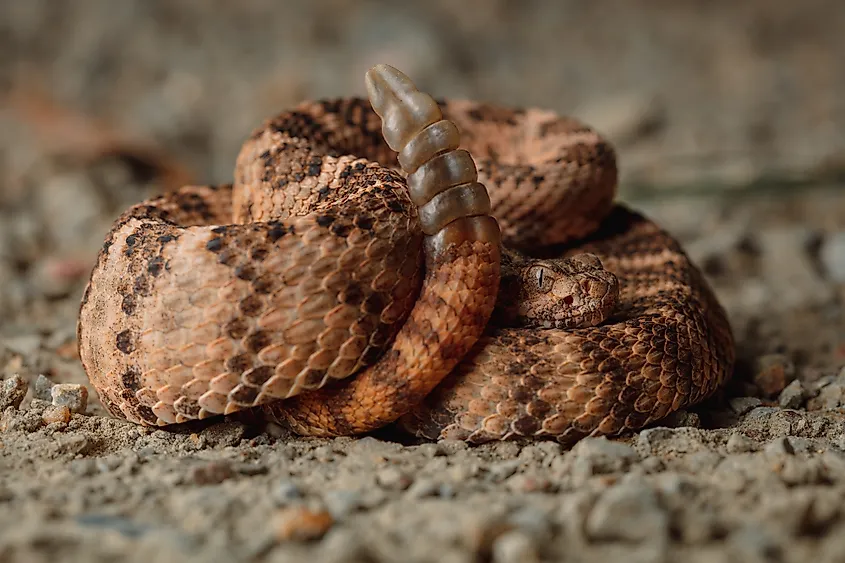
Ranging from parts of the southwestern US to northwestern Mexico, the tiger rattlesnake (Crotalus tigris) is one of the Western Hemisphere's most venomous snakes. Luckily for those approaching dangerously close to it, a warning shaker of its rattle could be a lifesaver. Although generally solitary in nature, this well-camouflaged snake in the desert landscape would not shy away from striking if threatened. With a modest venom yield of 6 - 11 mg but an LD50 rating as low as 0.06 mg/kg, this subtly striped rattler is one of the most serious snakes to inhabit the Western Hemisphere.
2. Mojave Rattlesnake - LD50 of 0.18 mg/kg
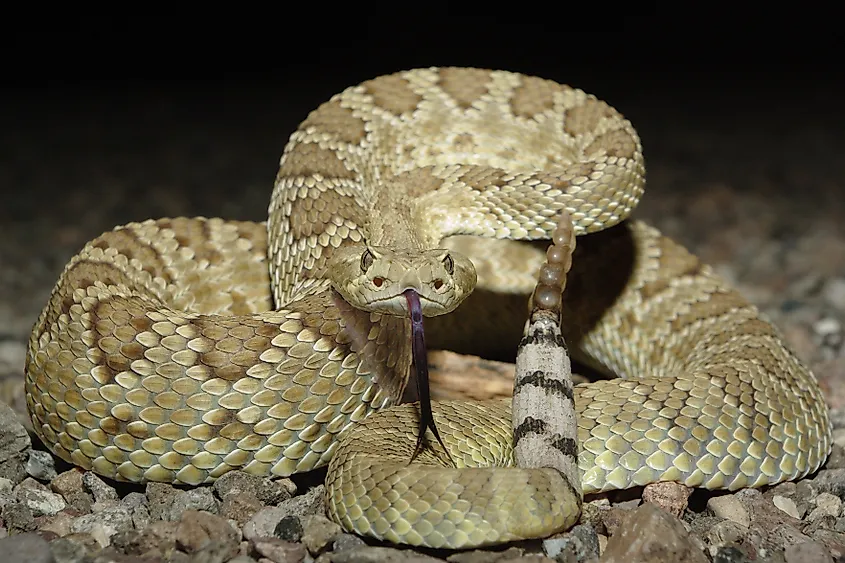
Also known as the "Mojave green" because of its slight verdant hue, the Mojave rattlesnake (Crotalus scutulatus) is a formidable desert dweller. Mind your surroundings if exploring the snake's titular region from April through September. This rattler is a nighthawk during the summer season but then retreats into existing rodent dens for a period of brumation during the winter. The Mojave rattlesnake has a dangerously low LD50 rating of 0.18, plus it is capable of delivering 50 to 150 mg of venom in an attack.
3. Harlequin Coral Snake - LD50 of 0.2 mg/kg
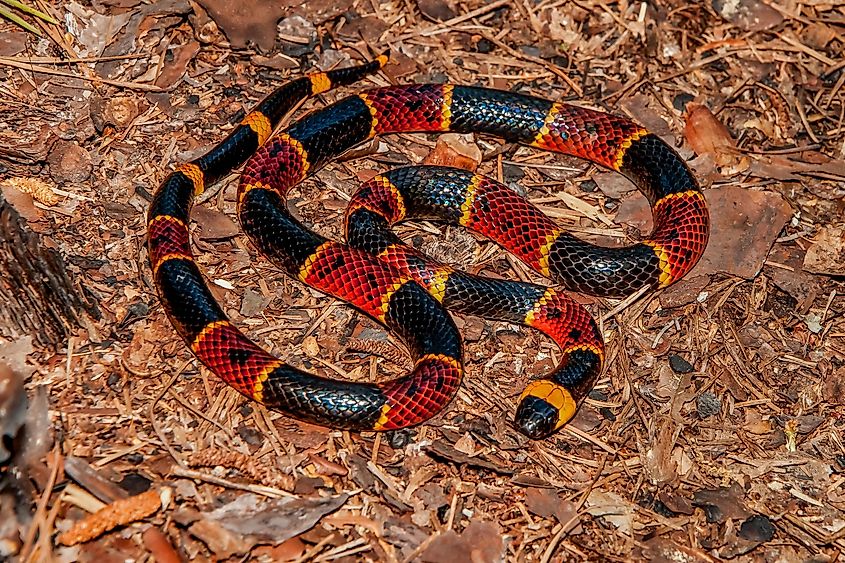
This boldly-striped member of the Elapidae family (which includes the likes of cobras and kraits) packs a potent venom (LD50 of 0.2 mg/kg) but a weak delivery system (0 - 5 mg). But even though it is visually stunning, this species of coral snake (Micrurus fulvius) likes to hide from humans. Only around 100 bites are known to occur in any given year, and of those, upwards of 40% are dry bites (i.e., no venom injected). So while it is still best to leave this small, pretty snake alone, it is thankfully nowhere near as dangerous as it might appear on paper (or if uncovered in the brush). The Harlequin coral snake has been identified (or is assumed to be present) in all Florida counties.
4. Western Diamondback Rattlesnake - LD50 of 1.01 mg/kg
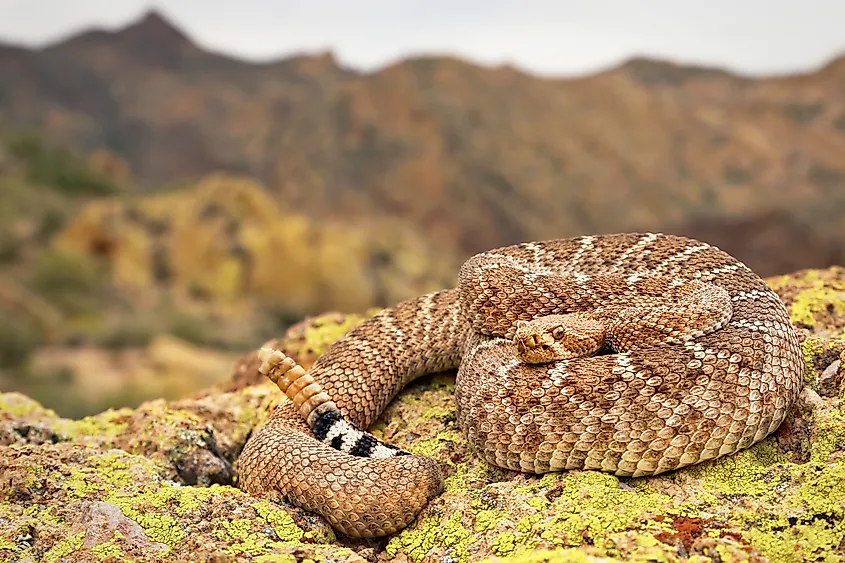
Also known as the "Texas diamondback," this rattlesnake is slightly smaller and less venomous than its cousin to the East. The western diamondback (Crotalus atrox) inhabits not only parts of the American Southwest but also spills into Northern Mexico. Pay attention if hiking in these areas (the western diamondback enjoys a range of niches, from grasslands to rocky desert terrain), as this rattler likely accounts for the most venomous bites in the country. Thanks to a venom yield between 35 and 250 mg, with an LD50 of 1.01mg/kg, approximately 20% of untreated injections prove fatal.
5. Eastern Diamondback Rattlesnake - LD50 of 1.2 mg/kg
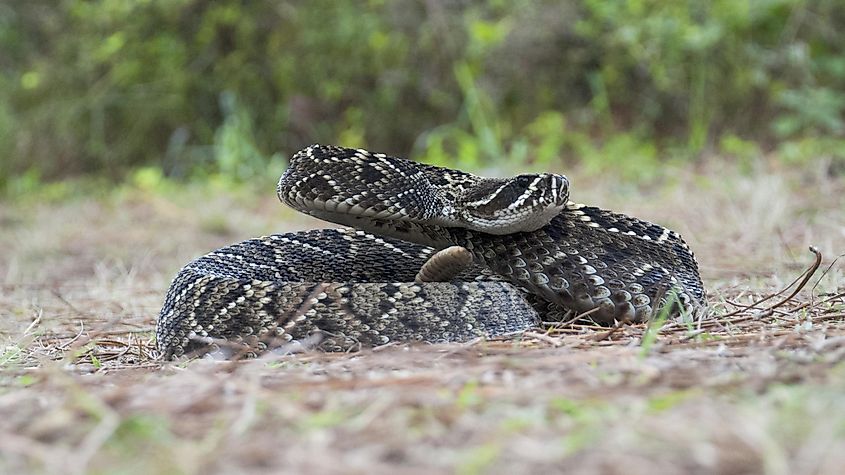
The eastern diamondback (Crotalus adamanteus) is another species that inhabits the Southeastern U.S. This mostly-solitary viper can be found throughout Eastern Louisiana, Southern Mississippi, the coastal plains of North Carolina, and the pinelands of Florida. This hefty rattler feeds well on rats, mice, and some unlucky birds, thereby growing
in excess of eight feet in length and north of thirty pounds. This makes it the largest venomous snake in the United States and one of the largest in the world. But due to its girth, the eastern diamondback is naturally on the slower side and relies on ambush tactics to hunt or snap at humans who wander across their path and fail to heed its warning. Because this bad boy delivers a heavy dose of venom (200 - 850 mg with an LD50 of 1.2mg/kg), fatalities are possible if left untreated.
6. Timber Rattlesnake - LD50 of 1.64 mg/kg
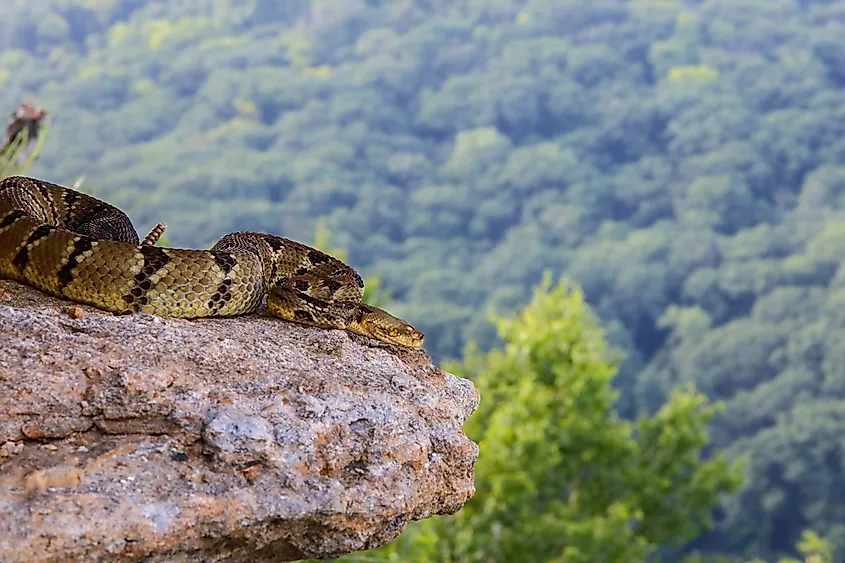
The timber rattlesnake (Crotalus horridus) goes by many names, including the American viper, black rattlesnake, eastern rattlesnake, and canebrake. Its reputation is well-deserved, with a widely-distributed presence across the Eastern States (from New York down to Florida), the ability to scale trees (spotted upwards of 80 feet off the ground), and a bite that does not mess around. This sizable ambush predator clocks an LD50 of 1.64mg/kg and a potential venom yield of 75 - 210 mg.
7. Cottonmouth
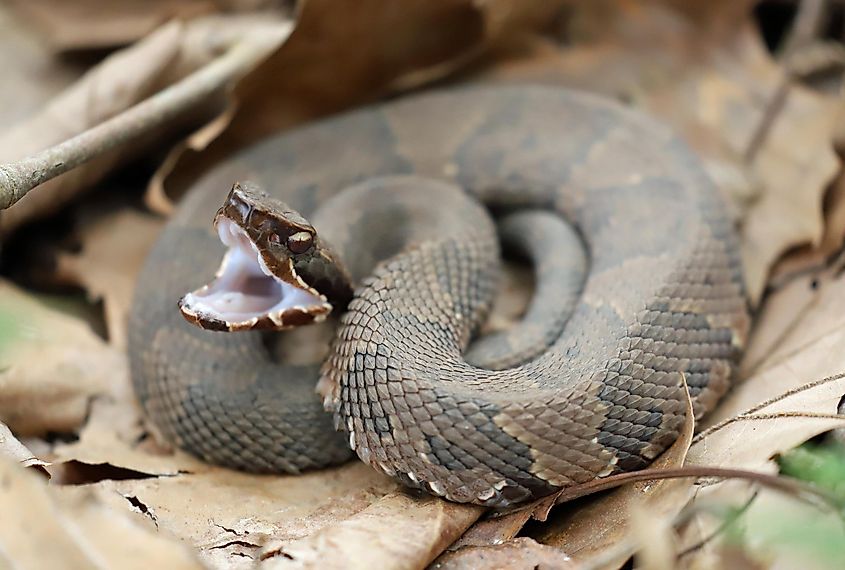
Named for its wide white mouth (that, unfortunately, is only likely to be spotted the instant before a bite), the cottonmouth (Agkistrodon piscivorus) is again part of the Viperidae family and a close cousin to the less venomous copperhead. This snake is known colloquially as the "water moccasin," given its propensity for the waters of the American Southeast and its preference for feasting on fish (as well as frogs and small mammals). Swimmers should be mindful of this large (up to six feet in length), aggressive species, as the cottonmouth's venom (LD50 of 2.04mg/kg and a yield of 80 to 170 mg) can cause heavy bleeding (due to its anticoagulant effects), shortness of breath, and in some cases, necrosis that may require amputations.
8. Sidewinder - LD50 of 2.6 mg/kg

This special kind of rattlesnake gets its slick name because of the way it shimmies across the desert sands. The sidewinder (Crotalus cerastes) hangs out around the tip of the Gulf of California, poking its head into both the Mojave and Sonoran Deserts. Though smaller than some of their noisy cousins, the sidewinder is the fastest of the rattlesnakes and therefore is not to be trifled with. Thankfully, this shifty species is a nocturnal introvert, doing whatever it can to hide away from the heat of the day and any lollygagging bipeds. So even though the sidewinder is venomous enough to create a very bad day for someone (LD50 of 2.6mg/kg and yield of 18 - 50 mg), bites in humans are rare occurrences. The same, however, cannot be said about rodents and lizards that stroll within striking distance. They are quickly paralyzed and killed by the injection, after which they are swallowed whole.
9. Copperhead - LD50 of 10.9 mg/kg
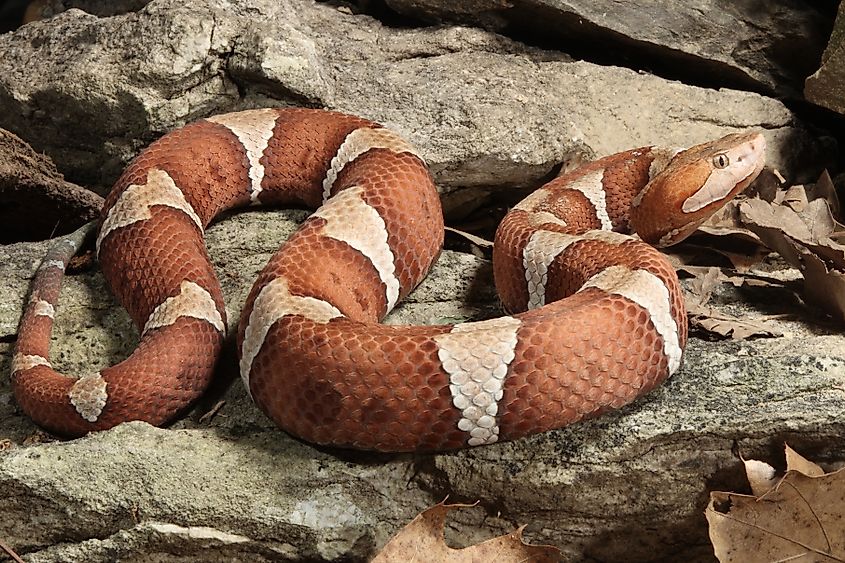
The Copperhead may conjure ominous connotations, but this final entry is actually not nearly as threatening as people may think. Copperheads (Agkistrodon contortix) usually lay low when humans are around, choosing to reserve their aggression for smaller, viable prey (such as mice, lizards, frogs, etc.). Bites occasionally happen, but as usual, this is done out of self-defense. And as such, venom may not even be injected (i.e., another dry bite). However, even though the encounter is unlikely to be fatal, the five subspecies of copperheads known throughout the region are worth giving a wide berth to. This member of the pit viper family lives throughout the Southeastern United States and has an LD50 of 10.9mg/kg and a venom yield of 40 - 75mg.
While the United States does foster a slew of venomous snakes, and bites do occur with significant frequency, the consequences are nowhere near as dire when compared to the global standard. So enjoy the wild freedom of America's backcountry, but be aware of the snakes in the area, exercise a few basic precautions, and calmly seek medical attention if bitten.
